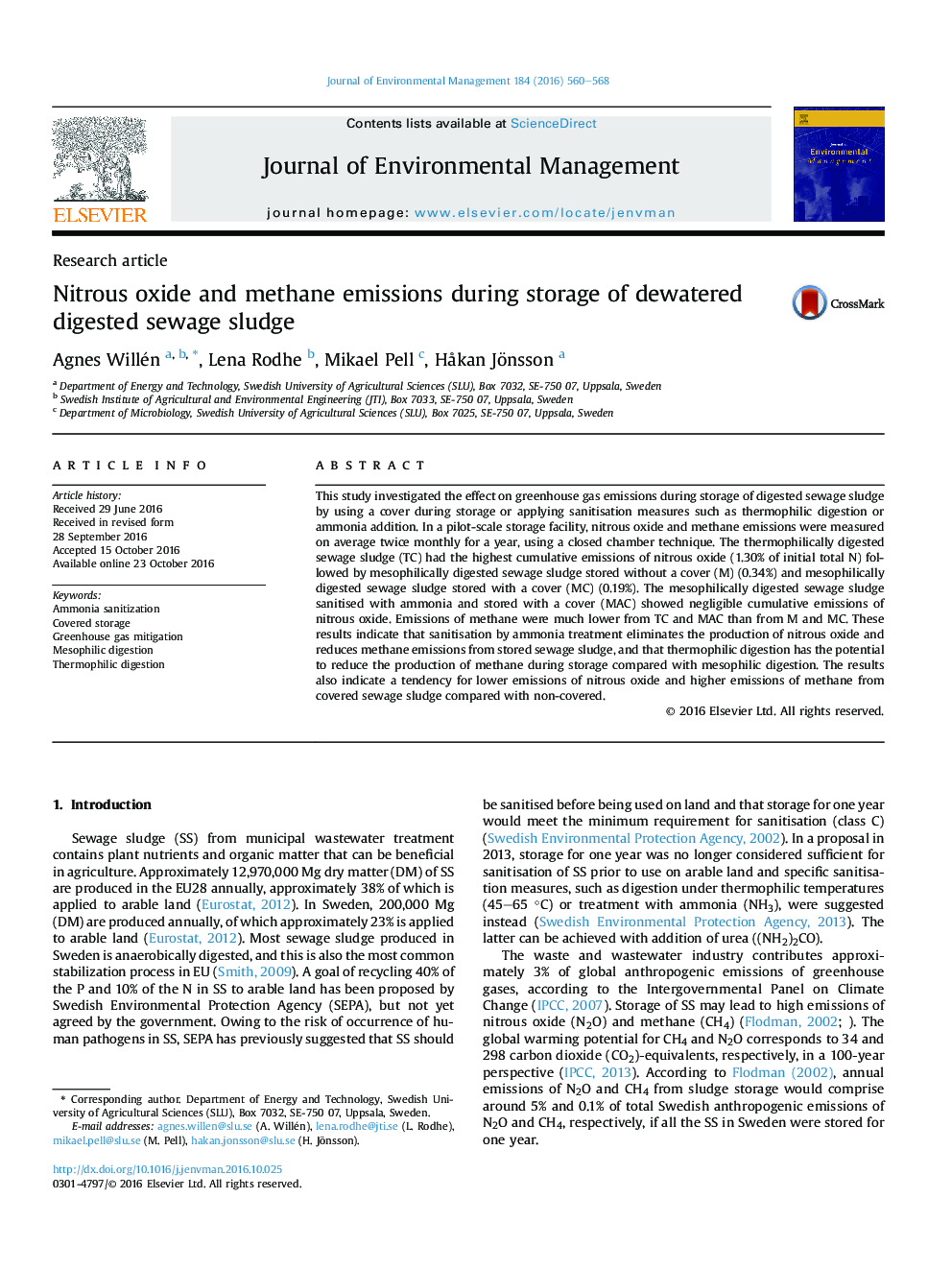| Article ID | Journal | Published Year | Pages | File Type |
|---|---|---|---|---|
| 5117168 | Journal of Environmental Management | 2016 | 9 Pages |
â¢Digested and dewatered sewage sludge was stored for one year.â¢Ammonia treated sewage sludge decreased emissions of nitrous oxide and methane.â¢An aerated structure of the sewage sludge increased nitrous oxide emissions.â¢Emissions of nitrous oxide and methane were low during cold periods.
This study investigated the effect on greenhouse gas emissions during storage of digested sewage sludge by using a cover during storage or applying sanitisation measures such as thermophilic digestion or ammonia addition. In a pilot-scale storage facility, nitrous oxide and methane emissions were measured on average twice monthly for a year, using a closed chamber technique. The thermophilically digested sewage sludge (TC) had the highest cumulative emissions of nitrous oxide (1.30% of initial total N) followed by mesophilically digested sewage sludge stored without a cover (M) (0.34%) and mesophilically digested sewage sludge stored with a cover (MC) (0.19%). The mesophilically digested sewage sludge sanitised with ammonia and stored with a cover (MAC) showed negligible cumulative emissions of nitrous oxide. Emissions of methane were much lower from TC and MAC than from M and MC. These results indicate that sanitisation by ammonia treatment eliminates the production of nitrous oxide and reduces methane emissions from stored sewage sludge, and that thermophilic digestion has the potential to reduce the production of methane during storage compared with mesophilic digestion. The results also indicate a tendency for lower emissions of nitrous oxide and higher emissions of methane from covered sewage sludge compared with non-covered.
